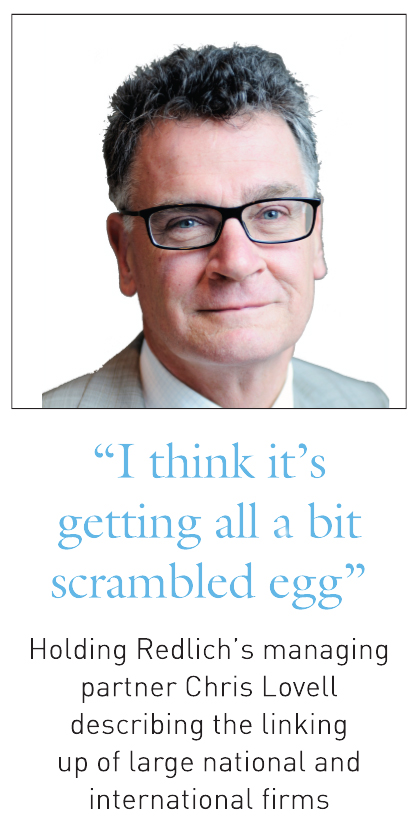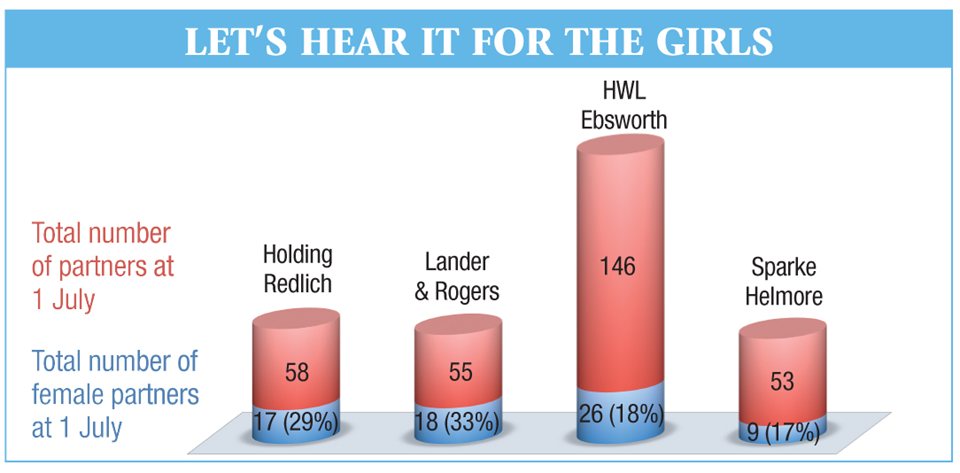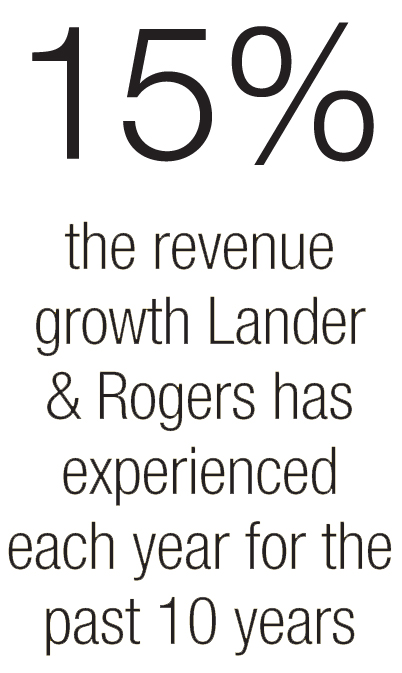Quality over quantity
As global firms tune their engines to large, cross-border transactional work, clients who don’t need international fire power are turning to other smooth operators. How are smaller firms picking up the pieces? Stephanie Quine reports.

As global firms tune their engines to large, cross-border transactional work, clients who don’t need international fire power are turning to other smooth operators. How are smaller firms picking up the pieces? Stephanie Quine reports.
The 1 July hiring rounds offered an opportune moment to reflect on lawyer movements this year.
The exodus of top-tier talent to smaller firms saw mid tiers pick up new national clients and unrivalled expertise.
As the hierarchy of firms shifts, mid tiers boast not only top-tier salaries but a down-to-earth firm culture where close partner-client contact and a variety of work is readily accessible. Smaller firms are also satisfying an increasing appetite for cost-cutting among clients.
As national firms fight the onslaught of globals, lawyers caught in the crossfire are viewing the mid tier as an attractive safe haven for a long-term, rewarding career.
Holding Redlich is one firm that has pounced on this opportunity to recruit quality staff.
Out with the old
Former Minter Ellison special counsel Chris Wille and former Commonwealth workplace lawyer Alistair Salmon are their latest lateral hires, joining Holding Redlich last month.
In April this year, the firm also scooped up former Freehills special counsel Gary Campbell and former Allens senior associate Jeremy Loeliger as corporate and commercial partners. Those appointments followed the firm’s poaching of DLA Piper’s Michael Grosser and Allens’ Suzy Cairney in Brisbane, as well as Freehills’ Daniel Blue in Melbourne, as partners in the corporate and commercial team.
 As managing partner Chris Lovell explains, it was a waiting game to snare these recruits.
As managing partner Chris Lovell explains, it was a waiting game to snare these recruits.
“We’ve had a concerted effort this year to build up a couple of practice areas and we’re consciously looking for top-tier talent. We’ve had to wait for the market to free up, which it has done,” says Lovell.
Freeing up space in the partnership, before new partners arrived, was also a priority. The firm spent around two years “housekeeping” and turned over about 20 per cent of its partners before it started growing, says Lovell.
“In my view, we’ve built a much stronger firm and are much more able to compete in what is becoming a very, very competitive market.”
Survival of the fittest
Lateral hires are also important to Lander & Rogers, which has experienced, on average, 15 per cent growth in revenue each year for the past 10 years.
In September last year the firm hired former Russell Kennedy partner and OH&S specialist Leveasque Peterson. Former Wotton + Kearney construction and insurance law specialist Charles Thornley joined as a partner in March this year, followed by financial services and superannuation specialist Ruth Stringer, who joined in May, and cited Blake Dawson’s merger with Ashurst as a factor in her decision to move.
The firm has picked up major clients Telstra, ExxonMobil and Orica as a result of such senior lateral hires, said Landers’ chief executive partner Andrew Willder.
“We plan to grow around 12 to 15 per cent in the next financial year, which we think is highly achievable for us across all areas,” says Willder.
But, as the market is opening up, competition is getting fiercer.
“Clients are pretty fluid these days and you need to have the strongest possible team you can assemble. It’s becoming an incredibly competitive market and, if you want to survive and prosper in this market, you have to be the best,” says Lovell.
Firms like HWL Ebsworth, which haven’t traditionally been seen as large firms, are getting bigger, and there are a handful of firms the size of Landers, Holding Redlich and Sparke Helmore, which want a piece of the pie.
“In the last six to nine months things have been tightening at the top of the bigger firms. There are a lot of really good people who were sitting just below partner level and looked as though they weren’t going to make it, and they had that feeling, and we’ve actively recruited into that area,” says Lovell.
Clients are in exodus too, due to fee rates or conflicts within large international firms.
Lovell describes them as either forced or voluntary “refugees”, and Holding Redlich has picked some of them up.
“I don’t think that trend is over. I don’t know how strongly it will continue but I don’t think, in Australia, having the firepower of a large national or international firm is necessarily an assistance for Australian clients … and there’s still plenty of them,” he says.

On target
The rates that government are seeking to pay are also starting to exclude a few firms, says Lovell, because those firms “can’t make money out of it”.
The Legal Services Multi-Use List (LSMUL) took effect on 1 June, replacing individual agency panel arrangements. Sixty-eight firms now make up a whole-of-government legal roster, compared with the 152 firms used by government agencies in the 2010/11 financial year.
HWL Ebsworth, Hunt & Hunt and Sparke Helmore made it onto all four service categories of the LSMUL, alongside the likes of Ashurst, Clayton Utz, DLA Piper and Minter Ellison.
HWL Ebsworth has been targeting government work since the announcement of the LSMUL last year, when it poached six partners from DLA Piper to head up a new Canberra office.
Jesse Webb, Sparkes’ national managing partner, who last month had his term extended for three years, said his firm was consciously looking for “the right people” to add to its corporate and government team because of the demand for work in the mid-market space.
 “We’re doing really high-quality work … our government and insurance teams advised Sydney water and Sydney desalination plant and on the public takeover of Ideas International. We’re after quality, not quantity, in terms of our people,” says Webb
“We’re doing really high-quality work … our government and insurance teams advised Sydney water and Sydney desalination plant and on the public takeover of Ideas International. We’re after quality, not quantity, in terms of our people,” says Webb
Small is beautiful
The mid tier can boast cultural benefits and higher retention rates, while still offering top-tier quality work that specialist lawyers can sink their teeth into.
Upon leaving Ashurst, her firm of five years, Ruth Stringer told Lawyers Weekly she much prefers the advisory side of law, where she is not restricted to certain types of work.
“I can kind of [handle] whatever question, small or big … I think that will be easier in a smaller firm because there won’t be such a need to put large teams onto every matter,” says Stringer, adding that there is no longer “such a compelling case” for lawyers to go to a global firm and that, especially in Melbourne, there is a trend for “boutique financial services-type practices”.
Willder takes great pride in Landers’ high retention rates of both its staff and clients, which he attributes to the firm’s culture.
“Our culture is very down-to-earth, very supportive and it’s fundamental to our success. We prioritise personal and professional development of our people and we seriously promote a balance between work and family responsibilities,” says Willder, adding that lateral hires often cite this as a key reason for joining Landers.
“We’ve got people who have been here a long time who are really committed to meaningful professional and personal relationships with our clients … clients stay with us; they’re extremely loyal and the majority of major clients have been with us for many years.”
Some of those clients include Wesfarmers, Ford, M2 Telecommunications and Bunnings, which the firm has acted for since 1992.
Lovell gives a similar description of the culture at Holding Redlich.
“People see us as an up-and-coming firm; we’re pretty fair and friendly and we’re a bit different in our culture to a lot of other firms. First of all, we’re not ‘eat what you kill’; and we’re very ready to reward people who achieve.”
“I think it’s getting all a bit scrambled egg,” says Lovell, describing the linking up of large national and international firms.
“At the moment, if you look at the so-called top-tier firms – which is a name they invented themselves – Mallesons is now King & Wood Mallesons, that’s obviously a step to something else; Freehills is [getting] all joined up; Allens has got a very close relationship [with Linklaters], and who knows where that’s going to go; Blakes is gone; Norton Rose Australia has gone through yet another trans-migration into another firm. There aren’t many left standing; Clayton Utz has lost a few of its people to A&O but it’s there; Corrs is still by itself, and Minters...”
So, what is left of the top tier?
Globalisation has created a new segment of law firms in Australia known as the ‘upper mid tier’, but who’s to say those firms are not the new ‘top tier’?
Holding Redlich has invested in top talent and new premises in Melbourne this year. Lovell admits the firm now needs to do some “bedding down” to recoup that investment.
Landers, on the other hand, has no intention of slowing down. The firm has a five-year strategy to open an office in either Perth or Brisbane, or both, by 2015.
“Tiering is often a consequence of size, not necessarily quality or service offerings. I think people have an inclination to group firms to assist in their comprehension of the legal market,” says Willder.
“There’s no doubt in my view that those mid-sized firms that know what they’re about, that have a clearly-defined strategy, are far more likely to be more successful and form what might be referred to as ‘upper mid tiers’.”





